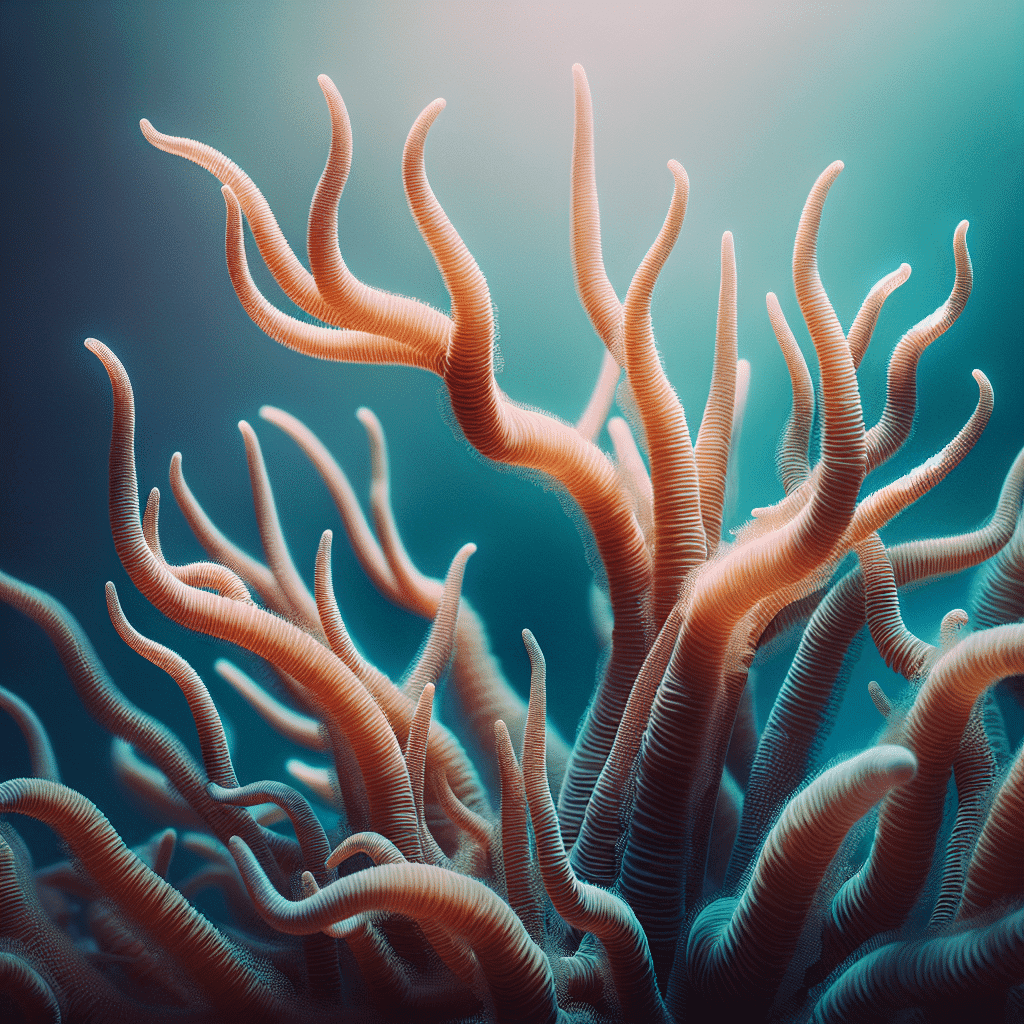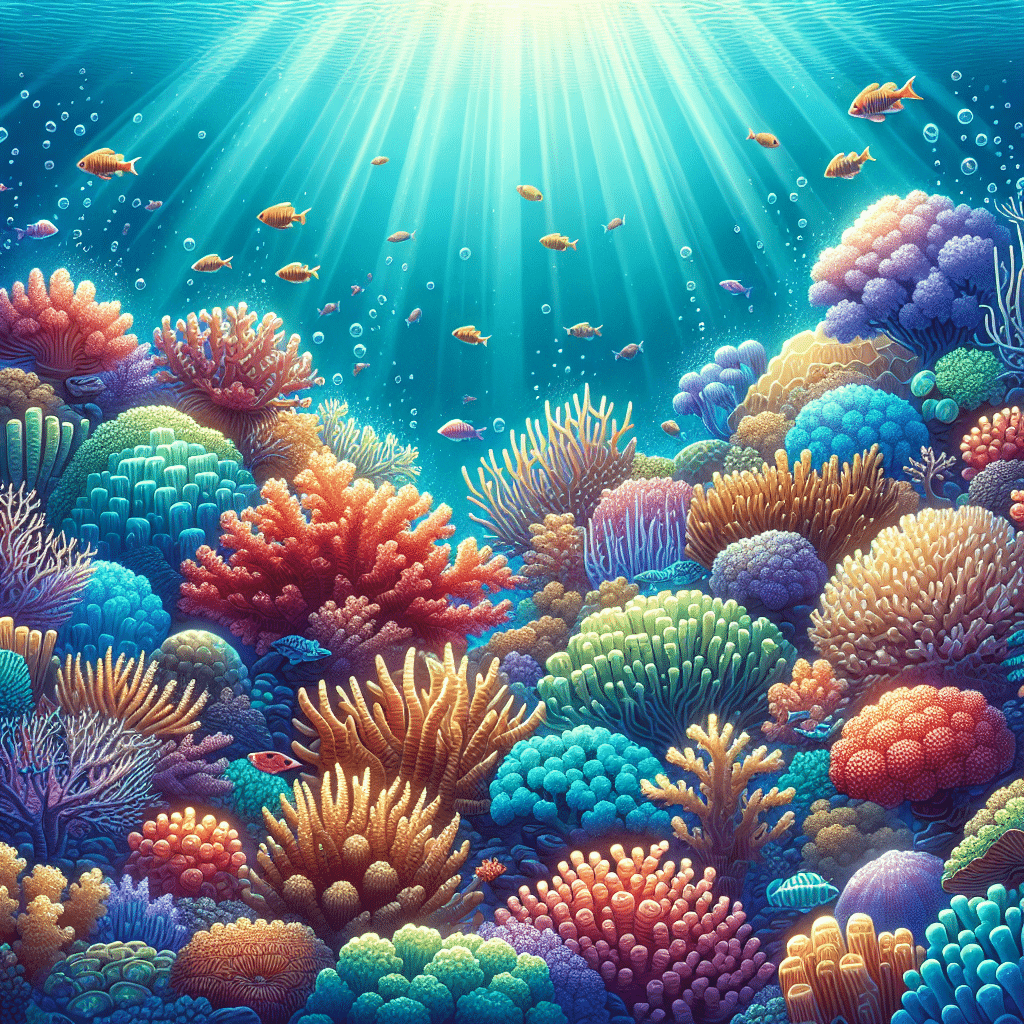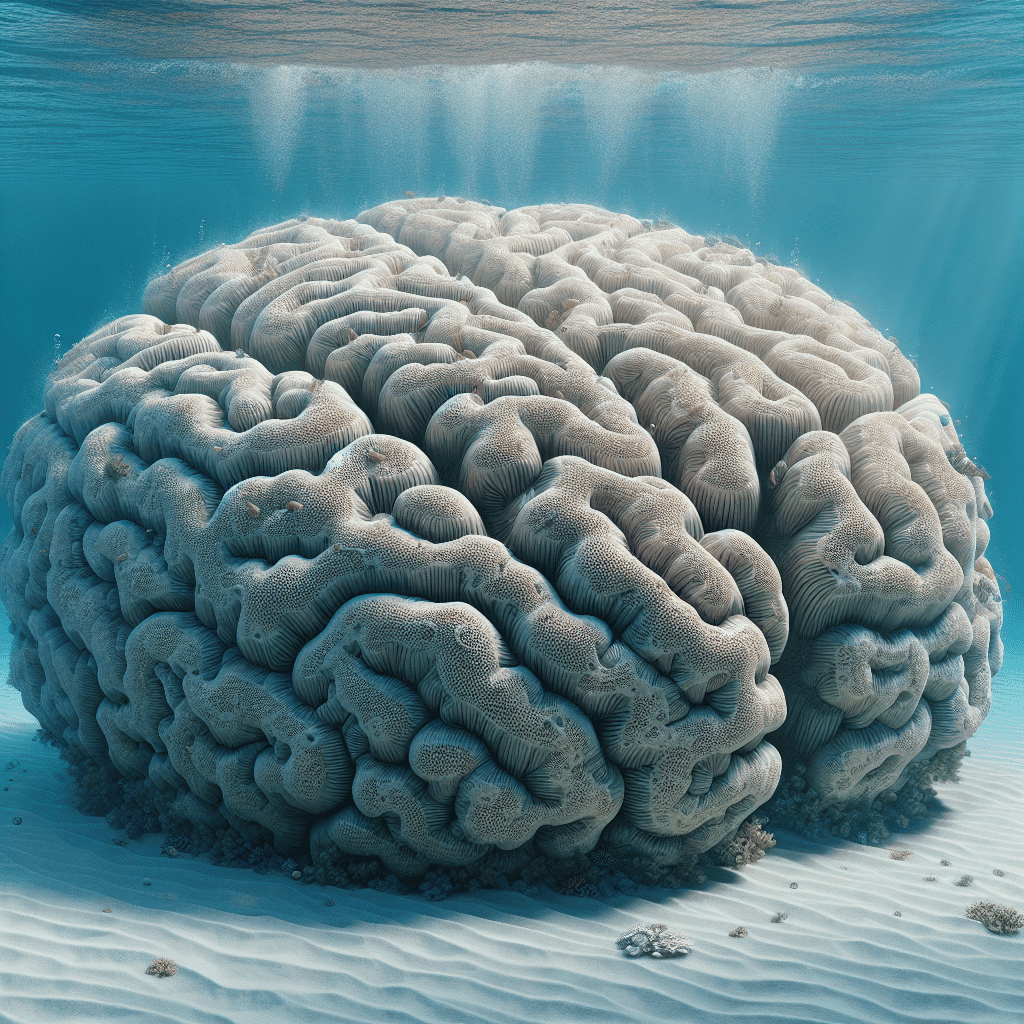Understanding Coral Reefs
As a fish tank and reef tank hobbyist, I find coral reefs fascinating. These underwater ecosystems are not just pretty to look at; they play a crucial role in our oceans and the environment.
Global Distribution of Coral Reefs
Coral reefs can be found in tropical destinations around the world, primarily in warmer waters near the equator. Interestingly, more than 100 countries boast coral reefs within their borders, with over half of these reefs located in just six countries: Australia, Indonesia, the Philippines, Papua New Guinea, Fiji, and the Maldives (Coral Reef Alliance).
Here’s a quick overview of the global distribution:
| Country | Coral Reef Coverage (%) | Notable Types of Corals |
|---|---|---|
| Australia | 40% | Stony corals, Acropora |
| Indonesia | 20% | Brain coral, Black coral |
| Philippines | 15% | Mushroom coral, Xenia |
| Papua New Guinea | 10% | Torch coral, Duncan coral |
| Fiji | 7% | Staghorn coral, Hammer coral |
| Maldives | 5% | Bubble coral, Fan coral |
Importance of Coral Reefs
Coral reefs are not only beautiful; they are essential for marine life and human communities. They provide habitat and shelter for a diverse range of marine species, making them one of the most biodiverse ecosystems on the planet. These reefs also protect coastlines from erosion and storm damage, acting as natural barriers.
Moreover, coral reefs contribute significantly to the economy through tourism and fishing. Many coastal communities rely on healthy reefs for their livelihoods. However, the health of coral reefs is threatened by various factors, including climate change, overfishing, and pollution. As hobbyists, it’s vital for us to understand these issues so we can participate in conservation efforts. For more information on different types of corals, check out our articles on brain coral, xenia, and mushroom coral.
In summary, understanding the global distribution and importance of coral reefs helps me appreciate the delicate balance of life within them and reinforces my commitment to their care and preservation.
Coral Anatomy and Growth
Understanding the anatomy and growth of corals is essential for anyone interested in maintaining a healthy reef tank. This knowledge helps to ensure that corals thrive and contribute positively to the ecosystem.
Structure of Coral Polyps
Coral polyps are the individual units that make up coral colonies. Each polyp is a small, cylindrical organism with a mouth surrounded by tentacles. These tentacles are equipped with specialized stinging cells called cnidocytes, which contain nematocysts. These cells are crucial for capturing prey and interacting with the environment (NOAA Coral Reef Conservation Program).
One of the fascinating aspects of coral polyps is their symbiotic relationship with zooxanthellae, a type of algae. These algae live within the gastrodermal cells of the coral and provide essential nutrients through photosynthesis. In return, the coral offers protection and a stable environment for the algae to thrive (NOAA Coral Reef Conservation Program).
| Feature | Description |
|---|---|
| Tentacles | Surround the mouth, used for feeding and capturing prey |
| Cnidocytes | Stinging cells that help in defense and feeding |
| Zooxanthellae | Symbiotic algae providing nutrients through photosynthesis |
Coral Skeleton Formation
The skeleton of corals, particularly stony corals, plays a vital role in their structure and growth. The skeleton is secreted by the lower portion of the polyp, forming a calyx or cup in which the polyp resides. This skeleton consists of thin, calcareous septa (sclerosepta) that provide protection and structural integrity to the coral.
Coral growth rates vary significantly based on the type of coral. Massive corals tend to grow slowly, typically increasing in size by 0.5 cm to 2 cm per year. In contrast, branching corals exhibit faster growth, reaching vertical heights of up to 10 cm per year under optimal conditions. However, mechanical constraints, such as strong wave action, can cause these branching corals to snap off (NOAA Coral Reef Conservation Program).
| Coral Type | Growth Rate |
|---|---|
| Massive Corals | 0.5 cm – 2 cm per year |
| Branching Corals | Up to 10 cm per year |
Understanding the structure and growth patterns of corals is crucial for providing the right conditions in a reef tank. This knowledge helps me to care for my corals, ensuring they thrive and contribute to the overall health of my aquarium ecosystem. Interested in learning more? Check out our sections on different types of corals or specific species like brain coral and torch coral.
Types of Corals
As I dive into the fascinating world of corals, I find that they can be divided into two main categories: stony corals and octocorals. Each type has its own unique characteristics and plays a different role in the reef ecosystem.
Stony Corals
Stony corals, also known as scleractinians, are the backbone of coral reefs. They are colonial organisms composed of hundreds to hundreds of thousands of individual polyps. These polyps work together to build the rigid skeletons that form the foundation of reef structures. Stony corals are often referred to as hard corals because they secrete a calcareous skeleton made of calcium carbonate (NOAA Coral Reef Conservation Program).
Stony corals typically have six tentacles or multiples of six and are known for their ability to host symbiotic algae called zooxanthellae. These algae live within the coral’s tissues and provide essential nutrients through photosynthesis, which is crucial for the coral’s growth and overall health (NOAA Coral Reef Conservation Program). Some popular types of stony corals include:
| Coral Type | Description |
|---|---|
| Brain Coral | Known for its grooved surface resembling a brain. |
| Star Coral | Characterized by its star-like patterns. |
| Montipora | A branching coral that can grow up to 10 centimeters per year. |
| Boulder Coral | Massive colonies that can grow several meters across. |
For hobbyists interested in keeping stony corals, maintaining proper water quality and lighting is essential for their health.
Octocorals
On the other hand, octocorals, often called gorgonians or soft corals, have eight tentacles and a more flexible structure. They do not produce a hard skeleton like stony corals but instead secrete a central core made of a protein called gorgonin, covered by an outer layer known as the rind (Florida Fish and Wildlife Conservation Commission). This flexibility allows them to sway with the currents, capturing plankton and other small particles for feeding.
Octocorals are known for their beautiful colors and shapes, making them popular among reef tank enthusiasts. Some common types of octocorals include:
| Coral Type | Description |
|---|---|
| Xenia | Known for its pulsing movement and bright coloration. |
| Leather Coral | Soft corals with a leathery texture, providing a unique look in the tank. |
| Kenya Tree Coral | A branching coral that is easy to care for and grows quickly. |
Both stony corals and octocorals contribute to the diversity and stability of reef ecosystems. Understanding their differences can help me make informed choices when selecting corals for my reef tank. For more information on specific types of corals, check out our articles on brain coral, black coral, and mushroom coral.
Characteristics of Finger Coral
Growth Patterns of Finger Coral
Finger coral, scientifically known as Porites compressa, is quite fascinating in its growth patterns. I find it intriguing how this coral forms stalky branches that resemble fingers, which is how it got its name. This coral species tends to grow rapidly in areas where the wave action is mild and light penetration is sufficient. Because of these conditions, finger coral often out-competes other coral species, establishing itself as the dominant coral in the reef slope zone.
Here’s a quick look at some characteristics of finger coral’s growth:
| Feature | Description |
|---|---|
| Growth Form | Stalky, finger-like branches |
| Dominance | Out-competes other corals |
| Preferred Conditions | Mild wave action, adequate light |
Environmental Preferences
When it comes to the environment, finger coral thrives best in specific conditions. It prefers locations with gentle wave action, as strong waves can damage its delicate structures. Additionally, adequate light is essential for its growth, enabling the symbiotic algae within the coral to perform photosynthesis. This relationship not only supports the coral’s health but also contributes to the overall health of the reef ecosystem.
For anyone caring for finger coral in a reef tank, here are some key environmental preferences to consider:
| Environmental Factor | Ideal Conditions |
|---|---|
| Wave Action | Mild (gentle) |
| Light | Sufficient for photosynthesis |
| Water Quality | Clean, stable salinity and temperature |
Understanding these growth patterns and environmental preferences helps in creating an optimal habitat for finger coral, whether it’s in nature or a home aquarium. If you’re looking to expand your reef tank, finger coral is definitely a resilient and visually striking option! For more on the care and characteristics of various corals, check out our articles on corals and acropora.
Species Spotlight: Branched Finger Coral
Description of Branched Finger Coral
Branched finger coral, scientifically known as Porites furcata, is truly a fascinating species. This coral is recognized for its unique appearance, featuring short, slender lobes or branches that have rounded tips. The lobes are often densely packed together, resembling human fingers, which is how it gets its name. The color typically ranges from yellow to grey-brown, with the interior parts of the coral often displaying a purplish tinge.
One of the standout characteristics of branched finger coral is its slow growth rate. Many scientists believe that some specimens of this species can live up to 1,000 years, making it one of the oldest forms of life on Earth. Its lobes can grow to a diameter of up to 0.4 to 0.8 inches (1 to 2 cm), and it can be distinguished from other types of Porites corals by its more uniform lobe size and rounded bulbous tips (Citrus Reef).
Habitat and Distribution
Branched finger coral is typically found in shallow to mid-slope reef environments, making it quite accessible for reef tank hobbyists like myself. It thrives in various conditions, often spotted among seagrass and on the roots of mangroves. This adaptability allows it to flourish in diverse marine settings.
| Habitat Type | Characteristics |
|---|---|
| Shallow Reefs | Abundant light and nutrients |
| Mid-Slope Reefs | Stable conditions for growth |
| Seagrass Areas | Provides additional shelter |
| Mangrove Roots | Protects from strong currents |
Understanding the habitat and distribution of branched finger coral is essential for those of us looking to include it in our reef tanks. Creating a suitable environment that mimics its natural habitat will help in ensuring its health and longevity. If you’re interested in other types of corals, check out our articles on brain coral, black coral, and mushroom coral.
Conservation Efforts for Coral Reefs
Conservation initiatives for coral reefs are essential, especially for hobbyists like me who want to keep our reef tanks thriving. However, these efforts face significant challenges and require effective restoration projects to make a real impact.
Challenges Facing Coral Reefs
Coral reefs are under threat from various factors, including climate change, overfishing, and pollution. The impacts of warming waters have been particularly devastating. Research indicates that coral restoration techniques, along with selectively breeding corals for heat tolerance, have shown limited effectiveness in preventing a decline in coral coverage due to climate change. Simply restoring areas without addressing the underlying threats, such as poor water quality, is often futile (Coral.org).
One significant issue is the genetic diversity of corals. If restoration efforts focus on repopulating reefs with corals that share similar genetic makeups, it could actually reduce the natural genetic diversity that is critical for coral resilience. Corals with high genetic diversity have a better chance of adapting to changing conditions, such as rising ocean temperatures.
Coral Restoration Projects
Coral restoration projects aim to revive degraded reef ecosystems, but they must work in conjunction with broader conservation strategies. While these projects can help repopulate areas, they are unlikely to succeed in isolation. Effective reef management that reduces major threats like overfishing and water pollution is crucial for the long-term health of coral ecosystems.
Here’s a quick look at some key aspects of coral restoration:
| Aspect | Importance |
|---|---|
| Genetic Diversity | High diversity enhances resilience to stress. |
| Local Threat Management | Reducing pollution and overfishing is vital. |
| Long-term Commitment | Restoration efforts require ongoing support. |
The Coral Reef Alliance emphasizes the need for strategic conservation efforts that focus on protecting natural genetic diversity and addressing local stressors. By investing in projects that keep existing reefs healthy and advocating for climate action, there’s hope for coral reefs to adapt and thrive despite the challenges.
As a reef tank hobbyist, it’s crucial to stay informed about these conservation efforts. Understanding the challenges and the importance of restoration can help me make better choices for my coral care and contribute to the larger goal of preserving these vibrant ecosystems.
Threats to Coral Reefs
Climate Change Impacts
As a reef tank hobbyist, I find it crucial to understand how climate change affects our beloved coral reefs. Warming ocean temperatures pose a significant threat to coral health. Coral restoration efforts and breeding for heat tolerance alone won’t cut it in the long run. Research shows that these methods are unlikely to prevent a decline in coral coverage due to climate change unless we manage local threats effectively.
The table below summarizes the main climate change impacts on coral reefs:
| Impact | Description |
|---|---|
| Temperature Rise | Leads to coral bleaching and mortality |
| Ocean Acidification | Weakens coral skeletons, reducing growth |
| Sea Level Rise | Alters light availability for corals |
| Increased Storm Intensity | Physical destruction of reef structures |
Importance of Genetic Diversity
Genetic diversity is vital for the survival of coral reefs, especially as they face climate change. High genetic diversity allows corals to adapt better to changing conditions. If we repopulate reefs with corals that have similar genetic makeups, we risk reducing natural diversity, making it tougher for them to adapt.
Effective management strategies that protect genetic diversity are crucial. Keeping local stressors, like overfishing and pollution, in check helps maintain the health of coral reefs. The table below highlights the role of genetic diversity in coral survival:
| Benefit | Description |
|---|---|
| Adaptation to Change | Enables corals to withstand environmental stress |
| Resilience | Diverse genetic makeups help reefs recover from disturbances |
| Ecosystem Stability | Supports a balanced ecosystem for marine life |
By focusing on protecting coral reefs through sustainable practices, I believe we can ensure their survival and health. Understanding these threats and advocating for effective conservation strategies is essential for anyone interested in maintaining a thriving reef tank.
Sustainable Practices for Reef Protection
Maintaining a healthy environment for finger coral and other corals in reef tanks requires a proactive approach. Sustainable practices can mitigate local threats and advocate for broader climate action, ensuring that our precious reefs can thrive.
Local Threats Mitigation
To effectively protect corals like finger coral, it’s essential to manage local threats such as overfishing and water pollution. These stressors can significantly impact coral health and resilience. Here are some strategies that I find useful:
| Threat | Mitigation Strategy |
|---|---|
| Overfishing | Implement sustainable fishing practices and create marine protected areas. |
| Water Pollution | Reduce runoff from agriculture and urban areas. Use biofilters and water purifiers in reef tanks. |
| Habitat Destruction | Avoid destructive fishing techniques and promote responsible tourism. |
Coral restoration projects alone won’t save reefs from warming waters. Research shows that even if corals are selectively bred for heat tolerance, without managing local threats, these efforts could be futile. It’s vital to focus on a combination of restoration and local management for real impact.
Advocacy for Climate Action
Advocating for climate action is crucial for the long-term survival of coral reefs. Here are some steps I take to support this effort:
- Educate Others: Share information about the importance of coral reefs and the threats they face. Engaging the community can lead to collective action.
- Support Policies: Back legislation aimed at reducing carbon emissions and protecting marine environments.
- Participate in Clean-Ups: Join local initiatives to clean up beaches and marine areas, which helps prevent pollution from reaching coral habitats.
High genetic diversity among corals enhances their ability to adapt to climate change. Protecting natural habitats is essential in achieving this diversity (Coral.org). By focusing on effective conservation strategies and advocating for climate action, we can work towards a sustainable future for our coral reefs.
For more about different corals and their care, check out articles on brain coral, torch coral, and acropora.



